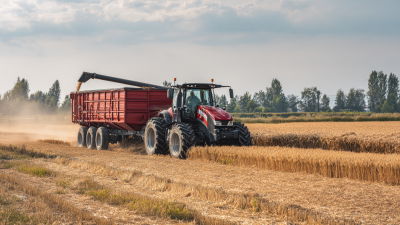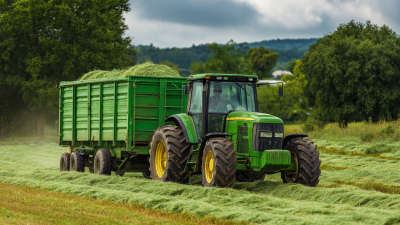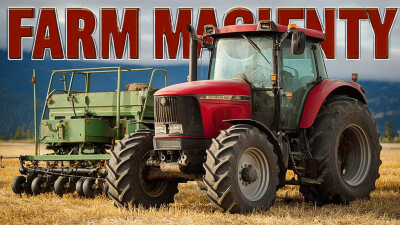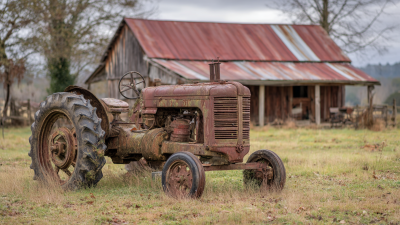In the ever-evolving landscape of agricultural machinery, "valley tractor and equipment" stands out as a critical resource for farmers and contractors seeking efficiency and productivity. Recent industry reports indicate that advanced tractor technology has led to a 20% increase in crop yields over the past decade, highlighting the significance of investing in the right equipment. As the agricultural sector continues to innovate, the demand for specialized machinery tailored to specific needs is on the rise, prompting professionals to make informed choices.
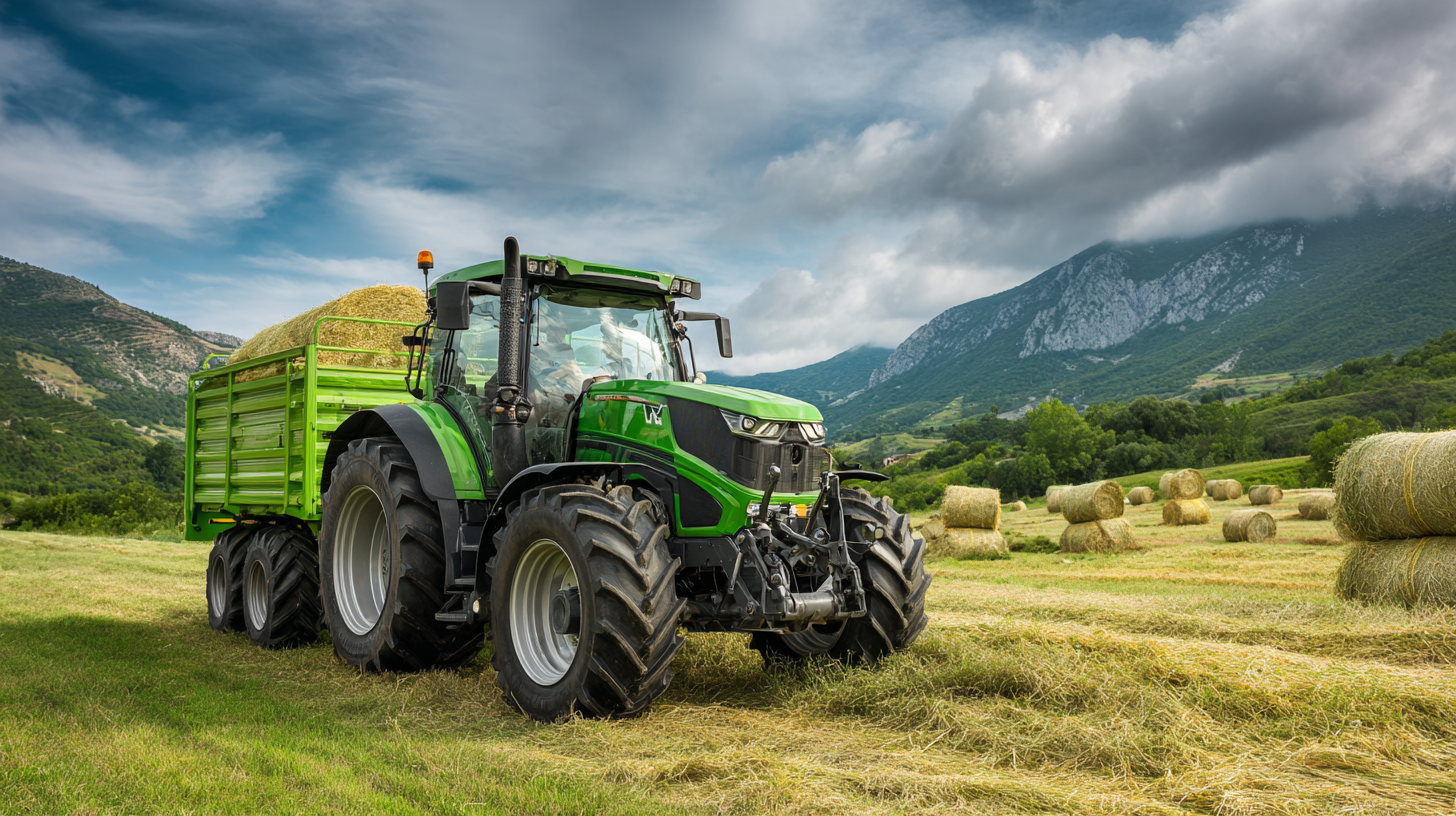
John Smith, a renowned expert in agricultural technology, emphasizes the importance of selecting the appropriate model: "Choosing the right valley tractor and equipment can greatly enhance operational efficiency and reduce labor costs." With a myriad of models available, understanding the unique features of each tractor and its suitability for different farming practices is essential. This guide aims to provide comprehensive insights into the top 10 valley tractor and equipment models, ensuring that users can make educated decisions based on their individual requirements and the latest industry advancements.
Valley tractors represent a significant advancement in agricultural machinery, designed to meet a variety of operational needs across different farming landscapes. With features such as high horsepower, exceptional fuel efficiency, and advanced technology integration, these tractors are tailored for both large-scale farming operations and smallholdings. According to a report by the American Society of Agricultural and Biological Engineers (ASABE), the adoption of modern tractors has increased efficiency on farms by up to 30%, showcasing the importance of selecting the right model.
When considering the right Valley tractor for specific needs, it’s essential to analyze key features such as horsepower, transmission type, and implement compatibility. For instance, models equipped with a hydrostatic transmission allow for smoother operation in complex terrains, while tractors with higher horsepower cater to extensive fieldwork involving heavy equipment. Data from the USDA indicates that the choice of tractor significantly impacts labor costs, with optimal models reducing these expenses by nearly 20%. Understanding these factors not only enhances productivity but also ensures better returns on investment for farmers.

When selecting a Valley tractor for agricultural needs, several key specifications should be evaluated to ensure optimal performance and efficiency. First and foremost, power output is crucial, as it determines the tractor's ability to handle various tasks such as plowing, tilling, and transporting materials. Additionally, the engine type and fuel efficiency are significant considerations; a robust engine with better fuel economy can lead to both cost savings and reduced environmental impact.
Another important factor is the tractor's weight and wheel configuration. A heavier tractor often provides better traction and stability, especially in challenging terrains. Furthermore, assess the lifting capacity of the hydraulic system; this will influence how much weight you can manage effectively. Lastly, consider the availability of attachments and implements compatible with the tractor, as these can expand your farming capabilities significantly.
Tips: When choosing a tractor, always test drive different models to get a feel for their handling and comfort. Also, consult with local farming experts to gain insights into which models perform best in your specific region, particularly concerning soil types and crop requirements. Finally, prioritize models that offer excellent service support and warranty options to ensure your investment is secured and well-maintained.
When selecting a Valley Tractor, understanding the terrain compatibility is crucial. Different landscapes, whether they be rugged hillsides, flat farmlands, or muddy pastures, require specific tractor features to enhance efficiency and performance. For example, tractors designed for hilly terrains often come with enhanced stability and engine power to tackle inclines, while those for flatter lands might focus on speed and attachment versatility for various farming tasks.
Additionally, evaluating the soil type and moisture level is essential. Tractors intended for muddy environments typically have wider tires and lower ground pressures to prevent getting stuck, while models built for dry, firm soils can feature narrower tires for better maneuverability. By assessing these factors, you can choose a Valley Tractor model tailored to your unique needs, ensuring optimal performance in your chosen landscape.
| Model | Engine Power (HP) | Weight (lbs) | Tire Size | Terrain Compatibility | Suitable Attachments |
|---|---|---|---|---|---|
| Compact Utility | 25 | 1,200 | 24 x 12 | Flat, Mild Slope | Loader, Mower |
| Mid-Range Utility | 40 | 2,800 | 28 x 14 | Moderate Slope | Plow, Cultivator |
| Heavy-Duty | 70 | 4,500 | 32 x 16 | Steep, Rocky | Farming Equipment, Grader |
| Specialty | 30 | 2,000 | 26 x 12 | Wetlands, Marshy | Ditcher, Edge Trimmer |
When considering a Valley tractor and equipment, budgeting plays a pivotal role in making an optimal investment. According to a recent industry report from the Agricultural Equipment Manufacturers Association (AEMA), the average cost of a mid-range Valley tractor can range between $25,000 to $75,000, depending on the specifications and features. This price range can substantially influence the overall cost-effectiveness of your agricultural operations, especially for small to medium-sized farms.

To ensure you choose the right model without overspending, it's crucial to conduct a detailed cost analysis that considers not just the upfront purchase price, but also long-term operating costs. Data from the National Agricultural Statistics Service (NASS) indicates that operating and maintenance expenses can add an additional 25-40% to your budget over a tractor's lifespan. Evaluating your specific farming needs, available financing options, and potential resale value will help maximize your budget and secure the best equipment for your needs, ultimately enhancing productivity and profitability.
Maintaining a Valley tractor is crucial for maximizing its efficiency and ensuring longevity. Regular maintenance tasks such as checking fluid levels, replacing filters, and inspecting belts and hoses can significantly prolong the life of your equipment. Additionally, keeping the tractor clean and free from debris can prevent damage and enhance performance. Understanding the specific maintenance requirements for your model is essential, as different tractors may have varying needs based on their design and use.
In a competitive market, where value is paramount, investing in affordable and reliable farm equipment like Valley tractors can make a significant difference for operators in agriculture and related sectors. By prioritizing maintenance, you not only optimize performance but also safeguard your investment against costly repairs. For example, implementing a routine check-up schedule and addressing minor issues promptly can create a more efficient workflow and reduce downtime, ensuring your equipment remains in peak condition for all tasks.

